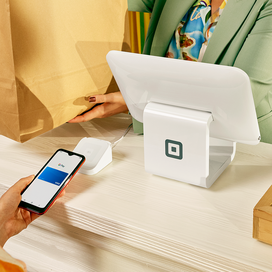Table of contents
This article was contributed by Brian Cluster at Retail Customer Experience.
U.S. holiday retail sales in 2019 exceeded $1 trillion for the first time ever, according to eMarketer. The 3.7 percent increase during last year’s peak season, the November-December holiday sales season, was approximately $1.01 trillion — the best of times for retailers, for sure.
We should be expecting another record-breaking season this year, but like most industries in the wake of COVID-19, projections have flipped upside down. Brick-and-mortar retailers have had to make two years of innovation happen in about two months, while eCommerce, at the same time, has reached double-digit growth.
The reality is that even when the pandemic is in the rear-view mirror, consumers will continue to increasingly buy online or mix internet and in-store purchases. Lines of patrons waiting outside for door busters after Thanksgiving dinner won’t be a reality this year, and it’s questionable whether they’ll return in the future. As such, brick-and-mortar retailers must adapt, and fast.
Here are the three questions we’re asking about the holiday season — and a few possible answers for how retailers will adjust.
What are early indicators telling us about the holidays?
For an idea of what the holiday season might look like, look no further than our current season — back-to-school. Consumers with children are in the midst of school shopping, if they aren’t already finished. The second-largest shopping season of the year has changed, too, since parents are allocating more of their spend toward items allowing their students to learn from home and products like disposable gloves, hand sanitizers and disinfecting wipes.
CNBC reports back-to-school spending will start later this year because of the moving target of when and whether schools will open their doors. What happens during this season is indicative of what is likely to occur during the holiday peak season. Simply put, if back-to-school shopping spend is less this year than last, holiday peak season will likely follow suit.
How will consumers shop?
McKinsey reports consumers who barely or sometimes used eCommerce shopping channels before the pandemic have quickly grown comfortable with it. New online shoppers, including older generations, like the convenience and germ-free option of shopping online and will continue to do so — in fact, Accelerant Research found eCommerce-based back-to-school shopping is projected to grow almost seven fold this year.
“Buy online, pick up in-store” has become everybody’s darling as consumers can order from anywhere, drive to a parking lot, and have goods placed in their cars without contact. Retailers who either didn’t offer or didn’t heavily rely on BOPIS before COVID-19 are welcoming it with open arms. A recent MarketWatch piece put it best: 2020’s Black Friday winners will be “any store without a crowd.” It could be that customers wait in their cars for their online orders to be delivered. Or that retailers borrow ideas from other industries and provide a way for customers to book shopping appointments, encouraging lower numbers of people in the store at once.
Chances are that even stores open for Black Friday shopping will offer significantly reduced hours. In fact, the Black Friday rush that used to start on Thanksgiving is over for now, as retail giants such as Wal-Mart and Target have announced their stores will close on Thanksgiving Day. Expect retailers to compensate with even deeper eCommerce deals on both Black Friday and Cyber Monday.
How will consumers purchase?
Another million-dollar question: how will today’s shopper purchase for the holidays? Retailers might assume that people are wary and conservative as unknowns persist, such as how long the pandemic will last, when confirmed cases will decrease, and what it all means for their jobs and financial outlooks. However, a recent survey from Radial found shoppers have no plans to change their holiday spend compared to last year.
Still, government subsidies may play a role in both how much people spend and when they spend it, as consumers begin digging into any money they had saved before extended unemployment benefits ended in July. Think, too, that since many folks are forgoing vacations and larger-ticket purchases and are paying off credit card debt sooner than normal, holiday purchases could occur earlier.
Managing this uncertainty can be a burden for retailers, especially as they focus on preparing warehouses for an onslaught of online orders. Now is a good time to review customer and product data from earlier years — although shopping habits may change this year, understanding what products your customers gravitated toward during peak season 2019 can give you an idea of what items to feature via eCommerce platforms in October and November. In addition, starting communication with the most loyal customers earlier than normal can ensure you stay top of mind as they determine where to allocate dollars this year.
Retail-ready during the unknown
eCommerce is up while in-store shopping in many (but not all) retail sectors is down. Consumers whose jobs have been affected could be shopping now or not at all as government subsidies begin to dry up. However, since travel and big-ticket spending is down, the 2020 peak season could come close to last year’s all-time high. Who knows?
An uncertain economic climate can be retail kryptonite, but it doesn’t have to be. The best course of action is to centralize data — customer, product, supplier and location data, to name a few. Solutions such as master data management (MDM) allow retailers to view data through a single source, enabling clearer insights into buying trends. MDM helps retailers weather the unknown by grounding their strategy in trusted, clean data. Along with agile management, that trusted data, shared transparently, enables analytics team to derive new insights and identify opportunities, both for everyday business and the holidays.
Planning for the holidays must start now as peak season 2020 is underway early. Use the data you already have to make your crystal ball a little clearer — and considering investing in MDM to manage uncertainty in 2021 and beyond.
Copyright Networld Media Group DBA Networld Alliance, LLC Sep 11, 2020
This article was written by Brian Cluster from Retail Customer Experience and was legally licensed through the Industry Dive publisher network. Please direct all licensing questions to [email protected].
![]()












